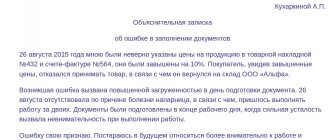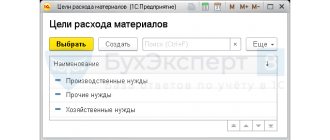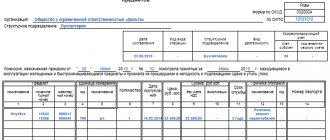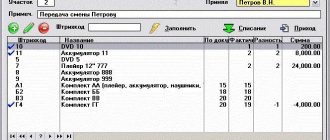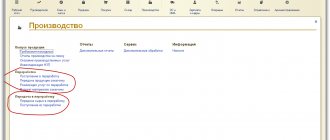Normative base
Resolution of the plenum of the Supreme Court of the Russian Federation dated March 17, 2004 No. 2 “On the application by the courts of the Russian Federation of the Labor Code of the Russian Federation”
Drawing up an explanatory note according to the law is not the responsibility of the employee, but his right, therefore it is unlawful to force him to do this.
Cases when the employer is obliged to acknowledge the employee’s reluctance to give written explanations are regulated by Part 1 of Article 193 of the Labor Code of the Russian Federation. If disciplinary measures are applied to an employee, the employer is obliged to request an explanatory note from the employee before applying them. Two working days are given to submit an explanatory note, after which the absence of written explanations is recorded in the relevant document.
ConsultantPlus experts examined how to hold an employee accountable for failure to fulfill official duties. Use these instructions for free.
Features and nuances of design
As we already mentioned above in the article, some employees mistakenly believe that their refusal to draw up an explanatory note will save them from punishment for a violation. But this is not true at all. Quite the contrary. *- , since it can reflect all the nuances of the situation that led to the violation.
ARTICLE RECOMMENDED FOR YOU:
Scaffolding acceptance certificate for operation - sample and form
For example, if an employee indicates a good reason (which will be obvious or proven by the employee), the manager will most likely simply reprimand the culprit or not apply appropriate punishment to him at all.
Expert opinion
Oleg Ustinov
Practicing lawyer, author of the website “Legal Ambulance”, one of the co-founders of the “Our Future” foundation.
The absence of an explanatory note is the basis for the formation of a special commission, whose specialists will establish the fact of a violation and record it with the appropriate act, after which the employee will still face punishment.
The document itself can be drawn up in a free style by hand or on a computer. However, most often, its execution is entrusted to a person who is familiar with the rules for creating business documentation. The main thing is to reflect real information in it and certify the act by putting “live” signatures of each member of the inspection commission.
Mistakes and pitfalls
When drawing up an act of failure to provide a written explanation by an employee, you must adhere to the norms and rules for documents of this type, the legislator, who indicates that corrections and inaccuracies must be avoided in the document if possible.
If a mistake was made at the beginning of drawing up the act, the lawyers of the Legal Ambulance website recommend putting this sheet aside and starting to draw up a new copy that will not contain corrections.
In the event that an inaccuracy was noticed after the act was signed, the error must be corrected, for which :
- cross out incorrect information with one solid line;
- Write down the correct data next to it;
- also, next to it write “Corrected Believe”;
- affix the signatures of all participants in the process of drawing up the act.
In addition, the document must have a strict structure - a header, a main block and a conclusion.
For those who have not previously encountered the preparation of such documentation, we recommend using a standard form, which already contains all the necessary fields and has the necessary structure. You can download it in Word and PDF formats below.
Why register a refusal?
The document is drawn up when the employer asks the employee to give written explanations on any issue, but receives a refusal. It is impossible to force an employee to provide an explanatory note, but the fact of refusal must be recorded. This document can then be used to confirm that disciplinary action has been taken against the offender.
Reference. The severity of punishment from management directly depends on the severity of the violations committed by the employee.
Drawing up an act of refusal of the explanatory note: how to reflect the substantive facts
As we defined above, the act of refusal of the explanatory note is drawn up by the manager of the employee who committed the violation of discipline and a representative of the personnel service. Accordingly, the essence of the incident is presented on behalf of these specialists.
However, there is a nuance: the drafters of the act must indicate that the facts reflected in the document are certified by a special commission. The easiest way to do this is by transferring the authority to draw up the act to the commission by including in the document a phrase stating that the commission has drawn up this act, confirming that:
- in the presence of the drafters of the act (indicating their full names and positions) on such and such a date, the employee was asked to give an explanation in writing about the disciplinary offense, for example, being late for work by an hour;
- as of such and such a date, the employee, as required by Art. 193 of the Labor Code of the Russian Federation, did not provide the corresponding explanatory note.
Immediately after the text block, you can indicate the full name and position of the drafters of the act, the commission, the employee himself, and also affix their signatures.
A sample of an act of refusal to write an explanatory note was prepared by ConsultantPlus experts. Get free demo access to the system and proceed to the sample document.
Who compiles and in what form
Most often, documenting the refusal to write an explanatory note is done by the person who requested it. Sometimes this is the immediate head of the department where the offender works, or another person who has requested an explanation. For the act to enter into legal force, witnesses, for example other employees, are involved in its preparation.
Thus, to draw up an act, assemble a small commission of at least three people. For example, the manager, secretary and personnel officer or lawyer of the organization. There is no specific list of employees included in the commission in the law.
The document is drawn up in a free style. The number of copies is not strictly regulated.
How to draw up a deed
The legislation does not impose any special requirements on both the information part of the act and its execution: the document can be printed on a computer or written by hand, on a simple blank sheet or on company letterhead.
It is important to comply with only one condition: the act must be signed by the direct compiler, as well as by the members of the commission who were present at its creation. It is advisable to obtain the autograph of the offending employee, and if he refuses, an appropriate note should be made in the document.
It is not necessary to certify a document with a seal, since since 2016 legal entities have been exempted by law from the requirement to use stamps in their activities.
It is enough to draw up the act in a single copy, but if necessary, you can make the required number of copies.
Contents and writing rules
Some nuances must be reflected in the document about the refusal to write an explanatory note:
- place, date and time of drawing up the document, its number;
- name of company;
- FULL NAME. and the position of the offending employee;
- the composition of the commission certifying his refusal to give explanations;
- a list of the employee’s actions that resulted in the need to submit an explanatory note.
There are no special legal requirements for registration, no matter whether it is handwritten or typed on a computer, on a blank sheet of paper or on the organization’s letterhead with or without a seal.
Attention! All members of the commission participating in its preparation, and the employee who committed the offense must sign the act of refusal. If he refuses to sign an autograph, also record this fact with a special mark in the document.
When is an act of refusal of an employee to give explanations drawn up?
Let's look at the process of drawing up an act using the example of a situation with an employee who has violated disciplinary rules (based on our practice, it is precisely such situations that are the reason for drawing up a document, most often).
So, depending on the severity of the violation, the employee’s manager determines the type of punishment, which can be not only dismissal, but also:
- rebuke;
- deprivation of wages for one or more months;
- deprivation of bonuses and cancellation of bonuses in the future;
- etc.
ARTICLE RECOMMENDED FOR YOU:
How to draw up a procurement act OP-5 in 2022
At the same time, according to the legislation in force in Russia in 2022, the employer cannot apply the punishment he has chosen to the guilty employee until the latter admits his guilt, setting out in writing his own version of events and indicating in the explanatory form the reason for his misconduct.
Expert opinion
Oleg Ustinov
Practicing lawyer, author of the website “Legal Ambulance”, one of the co-founders of the “Our Future” foundation.
However, in some cases, an employee may express his refusal to draw up the explanatory note described above, showing his desire not to give an explanation, which will make it impossible to apply punishment to him (otherwise, the employer’s actions may be regarded as unlawful).
But this does not mean that the absence of an explanatory statement will become the basis for revoking the punishment. In order for the employer’s actions to be lawful, and the employee to be fired or deprived of a bonus , it is necessary to draw up an act of failure to provide a written explanation by the employee, after which the manager will be able to apply a disciplinary sanction or other punishment corresponding to the offense.
About deadlines
According to the requirements and standards described in the Labor Code of the Russian Federation, the offending employee must give explanations for his actions within two days after the incident. If he refuses to draw up an explanatory note, the employer can issue an appropriate order, indicating the nature of the punishment.
Samples
Absence from work
| ClubTK LLC Act No. 1 On the employee’s refusal to give explanations for absence from work |
The head of ClubTK LLC is A.V. Voronov. in the presence of accountant Sidorova A.A. and cleaners Kuzyakina V.G. an act on the following has been drawn up.
02/20/2020 to employee Petrashevsky I.I. it was proposed to draw up an explanatory statement regarding absence from work (absenteeism). From providing written explanations Petrashevsky I.I. refused.
Employee signatures:
Voronov A.V., director
Sidorova A.A., accountant
Kuzyakina V.G., cleaner
In case of violation of discipline
| ClubTK LLC Act No. 2 On the employee’s refusal to give explanations regarding the fact of violation of discipline |
The head of ClubTK LLC is A.V. Voronov. in the presence of HR inspector Ivanova G.V. and manager Denezhny G.G. an act on the following has been drawn up.
03/21/2020 to employee Oporyshko I.R. it was proposed to draw up an explanatory statement regarding the violation of discipline. Oporyshko I.R. refused to provide written explanations.
Employee signatures:
Voronov A.V., director
Ivanova G.V., HR department inspector
Denezhny G.G., manager
About being late for work
| ClubTK LLC Act No. 3 On the employee’s refusal to give explanations for being late for work |
The head of ClubTK LLC is A.V. Voronov. in the presence of the seller Belkina I.V. and commodity expert P.A. Oreshkin an act on the following has been drawn up.
04/22/2020 to employee Volkov E.O. was asked to draw up an explanatory statement regarding the fact of being late for work. From providing written explanations Volkov E.O. refused.
Employee signatures:
Voronov A.V., director
Belkina I.V., seller
Oreshkin P.A., commodity expert
We draw up an act of refusal of the explanatory note: who draws up and signs the document
The legislator does not determine the list of persons authorized to draw up and sign an act of refusal of the explanatory note. However, based on the logic of its use as one of the documents establishing the grounds for dismissal of an employee, we can conclude that it must be drawn up and signed by 2 groups of persons:
- Firstly, employees who identified the fact of violation of labor discipline by the employee and obliged him to provide an explanatory statement. As a rule, this is his immediate supervisor, as well as a representative of the personnel service. At the same time, these employees perform both functions - they draw up and sign the corresponding act.
- Secondly, a commission formed similar to the one that certifies employees in order to determine the compliance/non-compliance of their qualifications with the position held. In this case, the purpose of the commission is to certify the fact that the drafters of the act recorded the employee’s refusal to write an explanatory note about the violation of labor discipline he committed. Thus, the commission endorses the act under consideration, assuring the correctness of the wording of the document’s drafters.
In accordance with paragraph. 3 tbsp. 82 of the Labor Code of the Russian Federation, the certification commission must include a representative of the trade union body (if the company’s employees are members of a trade union). The presence of a trade union representative on the commission certifying the employee’s refusal to give explanations is also desirable.
Thus, the act must be drawn up:
- head of the HR department of the enterprise;
- the employee's immediate supervisor.
In turn, the act must be signed by the same persons, as well as:
- members of a commission formed by analogy with the certification commission;
- representative of the trade union body.
In addition, the document must be signed by the employee himself. Moreover, if he refuses to sign the document, the head of the HR department is recommended to write by hand in the place where the employee’s signature should be, the phrase: “Refused to sign.”
Or you can include a special block in the structure of the act, where there will be the phrase: “I refused to sign this document,” as well as a place to indicate the full name, position of the head of the personnel service and his signature. This block can be placed next to where the employee’s signature should be.
If an error is found
It often happens that after a document has been printed and signed, information with factual errors is noticed in it, for example, the date, position, etc. are incorrectly indicated. Of course, such mistakes need to be corrected. This is formalized in a legally accepted manner:
- cross out the misspelled word or number so that it is visible; It is enough to cross it out with one line;
- then the correct version is written on top, next to it is indicated: “Believe the corrected one”;
- then the employee responsible for drawing up the act puts his “autograph” to confirm the authenticity of the changes made.
Form
As a rule, developing a template for drawing up such a document is the responsibility of the employer himself. Although the law allows you to draw up an act in a free style.
All the important details are displayed here:
- Actions that need explanation;
- the very fact of refusal to give any explanation is indicated.
Naturally, the act must contain information about the company and its director. Information about the employee in respect of whom the report is being drawn up is also indicated. The members of the commission are also listed here. You can often encounter a situation where an employee does not want to sign the drafted document. This also needs to be shown in the document. In addition, you can additionally draw up a new act related to the employee’s refusal to sign the original act.
The role of explanatory
As you might guess, with any unusual behavior of his subordinate, the manager wants to receive intelligible explanations. Often, an employee does not wait for the director’s request, but independently wants to explain why he did what he did.
After reviewing the explanations provided by the employee, the manager determines how guilty the employee is and chooses a punishment for him. But you can often encounter a situation where there are good reasons for certain actions. For example, these could be unexpected illnesses or circumstances that the employee could not influence. As a rule, the employee attaches documents confirming the reason to the explanatory note. In such situations, the director cannot take disciplinary action.
( Video : “How to write correctly and submit an explanatory note to your boss.”)
Necessity and essence of explanation
The imposition of disciplinary measures for established violations of labor discipline and improper performance of official duties (Article 192 of the Labor Code of the Russian Federation) includes an algorithm for the recording procedure, according to which the following is carried out step by step:
- establishing the fact of an identified offense and reporting the offense to management by drawing up a document by a specially created commission or submitting a report to the head of the relevant department;
- a proposal to write an explanation to the offending citizen in any form, indicating the reasons for the offense and drawing up an act of refusal to write an explanatory note if the proposal is rejected;
- studying documentation by management and making a decision by issuing an order using a standard or independently developed form;
- familiarization with the employee's order against signature within 3 working days and similar preparation of the document if you do not want to sign the order.
A decision to impose an administrative penalty cannot be made without requiring a written explanation of what the culprit did and a presentation of the events “from his own point of view,” for which Article 193 of the Labor Code of the Russian Federation allows two working days. If an employee refuses to write an explanatory note, then the fact does not exempt from punishment, but requires the drawing up of an act of refusal to give an explanation.
In case of non-compliance with the regulations, the procedure for applying disciplinary sanctions is considered to be carried out in violation of legal norms. If the sanction was dismissal for negative reasons (Article 81 of the Labor Code of the Russian Federation), then the termination of the employment contract is considered unlawful with the possible reinstatement of the employee in his position and the imposition of financial sanctions on the business entity and the calculation of wages for the period of forced downtime.
